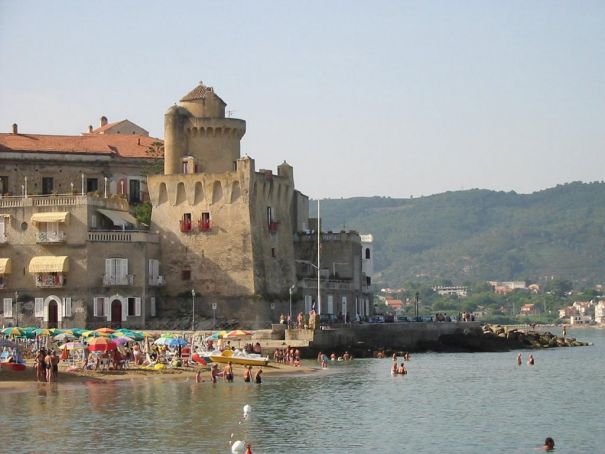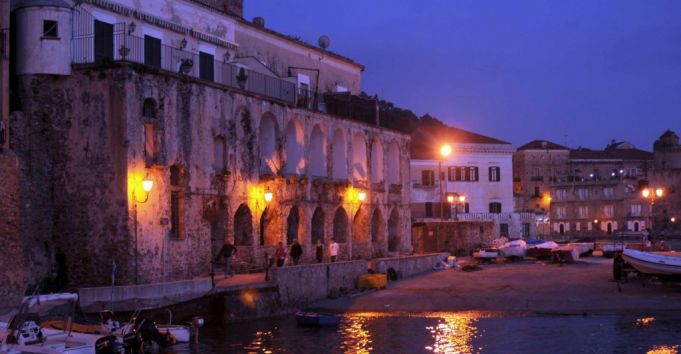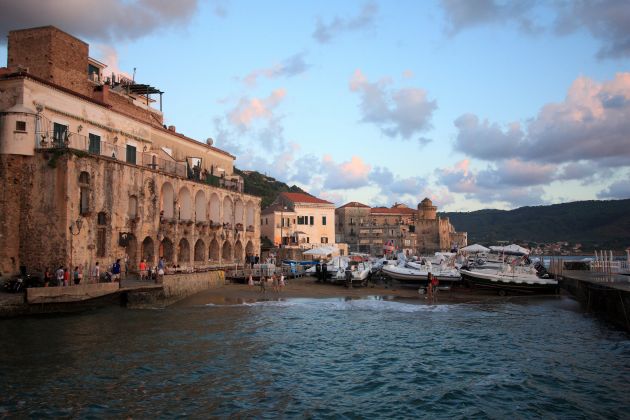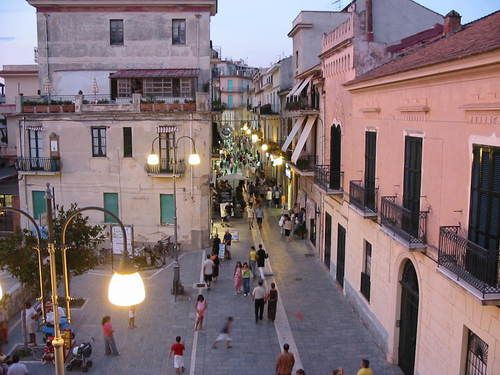Upon arriving in S. Maria di Castellabate, first impressions might suggest that the inhabitants of this charming fishing village are addicted to ice-cream.
Villagers of all ages stroll up and down the main thoroughfare, Corso Matarazzo, many with one arm draped around their nearest and dearest, while seemingly everyone holds an ice-cream in their free hand. Whether it’s the euphoric after-effects of the ice cream or the relaxed pace of life, the residents seem more than content with their lot.
Located in the Campania region of southern Italy, Castellabate sits snugly on the edge of the Tyrrhenian Sea along the Cilento coastline. The nearest city is Salerno, 60 km away, while Agropoli is a distance of 12 km. Although the latter is relatively close, the relentlessly winding mountain roads makes it seem much further.
Indeed it is these last 12 km which can provide an uncomfortable, if picturesque, introduction to S. Maria di Castellabate. The establishment of the village can be traced back to S. Costabile Gentilcore, the fourth abbot of Cava de’ Tirreni, who in 1123 built a castle here, 278 m above sea level.
The origin of the area’s name also rests with S. Costabile who merged the Latin for castle (castrum) with abbot (abbatis) which eventually became Castellabate. Revered first as a hero and then as a saint, legend has it that Costabile saved the village from pirates who had already stormed neighbouring Pozzillo and whose attack was imminent. The saint’s form of protecting his people, however, veered more towards the devilish than the divine: he gathered a herd of goats, attached two lit torches to each animal’s horns and charged them at speed down the hills to the shore. Once this disturbing apparition was witnessed by the marauding Saracens, they instantly fled, believing the goats to be villagers defending their territory.
Further myths abound. Some scholars suggest that an island to which Homer refers in The Odyssey is the local island Licosa: Ulysses heard that on this mysterious isle lived the siren Leucosia, who lured sailors to their death with her enchanting singing. Ulysses ordered his crew to plug their ears and tie him to the ship’s mast until they sailed safely past. On realising her failure to bewitch Ulysses, Leucosia drowned herself.
Over the centuries, ownership of the castle of Castellabate and its surrounding lands changed hands many times, generally among the region’s nobility. In the 16th-century the estate passed to the Granito family. When Angelo Granito, marquess of Castellabate married Francesca di Paola Pignatelli, Princess of Belmonte, the Granito family assumed the Pignatelli Belmonte titles. Now a luxury hotel, Palazzo Belmonte is owned by Angelo Granito Pignatelli, the 13th Prince of Belmonte.
Characterised by cobbled lanes, crumbling cottages and window pots overflowing with geraniums, not all of the village could be described as postcard material. An attitude of “if it ain’t broke don’t fix it” prevails, but herein lies its charm. This place is lived-in and loved. Here people not only know each other on a first name basis, they know each other’s preceding two generations of family, and the streets are thick with jovial, flirtatious banter, often between the most senior residents.
Using battered ropes and hooks, bags of water melons are hoisted upwards over rusty balconies, much to the delight of tourists seated precariously in cafés underneath. On the hottest summer days, shirts and shoes are not a requirement in the town centre, and expect to be hit with a football as children race up and down with sandy feet, apparently not noticing they are no longer on the beach.
In nearby Lago is the Cava dei Rocchi, the quarry from which the vast columns used in the colonnade of the temples of Paestum were allegedly cut by the ancient Greeks. Their cylindrical scars are still visible. In Castellabate too, history is refreshingly close at hand: in 1990 the cargo of a submerged shipwreck from the first century BC was discovered 40 m off the coast, the contents of which are on display in the Museum of the Sea in Villa Matarazzo.
The area’s waters are noteworthy for their cleanliness and have been awarded a blue flag rating every year since 2003. This has coincided with a slow but steady rise in tourism over the last decade, with visitor after visitor claiming to have “discovered” the village. In the past, the tourist trade was almost exclusively regional but thanks to local travel agencies collaborating with their foreign counterparts, the amount of visitors from overseas has dramatically increased.
Alessandra Florio from La Pergola Hotel credits the rise in numbers, and the longer holiday season this creates, to wedding planners based in Norway, Britain and Ireland, who organise up to 300 weddings a year in the village.
On summer evenings, the palm-lined promenade exudes a balmy romance. In the early morning, like an advent calendar the village’s shutters creak open one by one, and by noon the hum of conversation reaches a crescendo. Come lunchtime however, the streets quickly empty. What was previously a carnival of laughter becomes a ghost town devoid of noise, as if plunged into silence by a power cut.
In Piazza Matarazzo, those foolish enough to be caught outside in the midday summer sun remain stuck in time, turned to pillars of salt wherever they found themselves when the church bells struck siesta time. People slump on seats, against walls, under trees, all stoically willing this unwritten curfew to end. Some hours later, at an always imprecise time, the electricity is suddenly plugged back in, the figures come to life and the high volume carnival once more resumes. And maybe, just maybe, it’s time for another ice cream.
Andy Devane
This article appeared in the 29 September 2010 edition of Wanted in Rome.
How to get there: Driving from Rome (320 km): Caserta to Salerno, then take the A3 Salerno – Reggio Calabria, exiting at either Battipaglia or Eboli for the statale 18 in the direction of Paestum, Agropoli Sud, arriving at S. Maria di Castellabate. Train from Naples central train station to Agropoli, then local bus or taxi to S. Maria di Castellabate.
Useful numbers: S. Maria Castellabate tourist office tel. 0974 962321, www.comune.castellabate.sa.it. La Pergola Hotel, Corso Matarazzo 104, S. Maria di Castellabate, tel. 0974 961008, www.lapergolahotel.it. Palazzo Belmonte, Via Flavio Gioia 25, S. Maria di Castellabate, tel. 0974 960211, www.palazzobelmonte.com.































